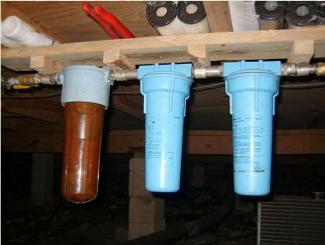Water Filtration Systems and Clean Water
Water Filtration Systems comes in all sizes and makes. They all claim to be a superior product to their competitors. When it all comes to the clarity of the matter the final product should be crystal clear.
The Micron and Why it Matters
The Micron is a term of measurement and if the definition is found it will read, "A metric unit of length equal to one millionth of a meter". Now that is small, so small in fact that it cannot be seen with the human eye. All filtration systems may use this term for the size and type of filters. They are described as 20 microns, 10 microns or 5 microns in size. This corresponds to the particulate size that can pass thru the filter medium. The smaller the Micron numbers the smaller the particle that can pass into the water system.
One Filter, Two Filter, Three Filter More
Water filtration systems may come with as many as three filter canisters in the operation. This type of system is known as a step down filter. The typical system may contain a 20-micron as the first filter and a 10-micron as a secondary filter. A 5-micron may be the final filter in the operation. This allows for fewer changes in the more expensive smaller micron filters. This system operates on the principles of the larger particles are captured in the larger medium filter which in turn will become smaller from its clogged pores. This will actually create a 10-micron filter in the 20-micron element. Most often the larger the micron rating of a filter the least expensive it is.
Paper, String, Carbon
Most large micron filters are of the paper construction and are a very economical choice for large particle removal. These filters have the capacity for decreasing their pore size and actually improving water quality with the more particles they capture. Of course as the porous holes become clogged the flow will diminish which is a great indicator of when this type of filter needs to be changed. The string filter comes in many micron ranges, the most beneficial purpose of this type of filter is that they can be cleaned by backwashing, sanitized in a solution of water and chlorine and be used many times over. The most common size of the string filter is the 10 and 5-micron pore size. Carbon filters should be utilized as the final filter as they tend to be the most expensive and do the most work. The carbon filter not only removes the smallest particulate of 1 to 5-microns. They are also used for odor and taste removal. The carbon molecules actually bond to certain chemicals and hold these offensive materials in the filter medium before they escape the filter and give a clean and clear appearance to the water.


